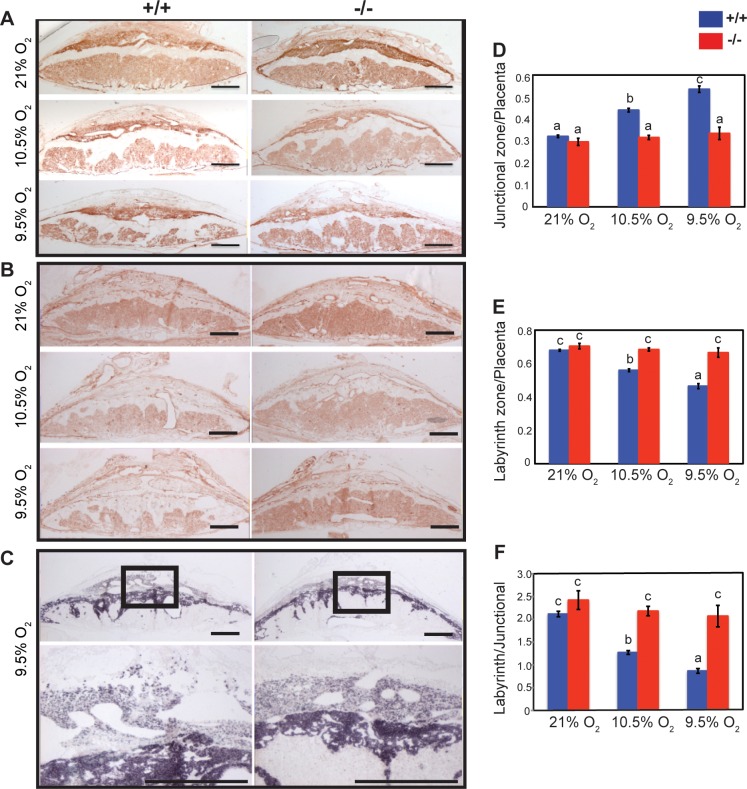FIG. 6.
Effects of maternal hypoxia on organization of placentation sites at gestation d17.5 in wild-type and Prl7b1 null mice. Isolectin B4 histochemical staining (A) and PECAM1 immunohistochemical staining (B) of gestation d17.5 placentation sites from wild-type and Prl7b1 null animals exposed to atmospheric oxygen (21% O2) or maternal hypoxia (10.5% or 9.5% O2). C) In situ hybridization for Tpbpa transcripts on gestation d17.5 placentation sites from wild-type and Prl7b1 null animals exposed to maternal hypoxia (9.5% O2). Panel C contains low magnification (upper images) and high magnification images corresponding to the boxed areas (lower images). Bar = 1 mm. Quantitative analysis of placentation sites of wild-type and Prl7b1 null dams exposed to various oxygen tensions (wild type: 21% O2, n = 6; 10.5% O2, n = 5; 9.5% O2, n = 5; Prl7b1 null: 21% O2, n = 5; 10.5% O2, n = 5; 9.5% O2, n = 5). Each sample corresponds to placental measurements from a different pregnancy. D) Junctional zone/placenta ratio. E) Labyrinth zone/placenta ratio. F) Labyrinth zone/junctional zone ratio. Values are presented as mean ± SEM. Letters above each mean value possessing a different identity reflect significant differences among the relevant groups (P < 0.05).

